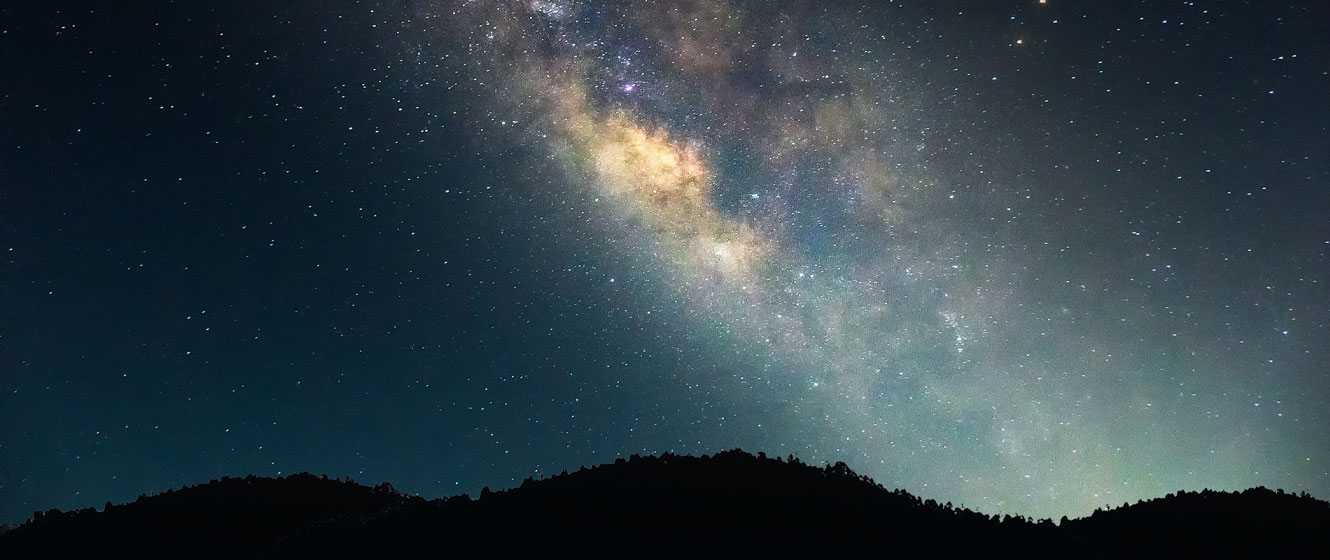
When most people think of the stars, they see them as distant points of light. Some stars show a little color while others - the planets - appear to glide against the backdrop of the night. Non-astronomers don’t always see what we see when we “stargaze,” and many believe you need a telescope to truly see the wonders of the universe. The reality, of course, is a little different.
There are a number of objects you can see throughout the year with only your eyes. True, what you see won’t match the images you see from NASA, or even through a small telescope, but by taking a few moments to appreciate what you’re looking at, you gain a deeper understanding of the universe and our place within it.
1. Polaris
Take the star Polaris, for example. Many people know this as the “North Star” but they actually know very little about it. For example, many non-astronomers believe it’s the brightest star in the sky, when, in fact, it’s only of average brightness. So what makes it so special?
Polaris is so-called because, if you were to stand at the North Pole, you’d see Polaris directly above you. Consequently, no matter where you are in the northern hemisphere, if you can see Polaris, you can always find north.
Sailors have used the star for navigation for thousands of years and you can still use it today. If you’re familiar with the Big Dipper, you might already know that you can find Polaris by drawing a line through the outermost stars of the dipper’s bowl. These two stars, named Merak and Dubhe, are nicknamed “the pointer stars” for this reason. By drawing a line through the pointers, you can find Polaris and then follow the star toward the north.
What other star appears unmoving from anywhere in the northern hemisphere at any time of year? What other star, to quote Shakespeare’s Julius Caesar, is as “constant as the northern star?”

2. The Orion Nebula
Ursa Major is not the only constellation we can use to find other constellations. Orion, the Hunter, is a bright, very well known winter constellation that can be easily seen well into spring. The three stars of his belt can be used to locate the constellations of Taurus the Bull, and Canis Major, the Greater Dog.
Look below his belt and you’ll see a tiny misty patch. Visible from even suburban skies, the Orion Nebula is a huge cloud of gas and dust, some 1,350 light-years away. It spans a staggering 24 light-years across, which is roughly six times the distance from the Sun to our nearest stellar neighbor, Proxima Centauri.
But that’s not all. This huge cloud in space is also the birthplace of stars. If you look carefully, you may even be able to see one glinting. The Orion Nebula is not unique; there are a multitude of similar clouds in space, but none in the northern hemisphere are so easily seen.
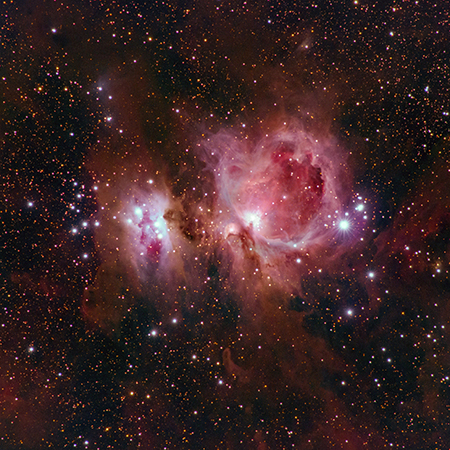
3. The Pleiades
Let’s go back to the three stars of Orion’s belt. Follow those stars toward the northwest and you’ll come to Aldebaran, the red giant star that marks the eye of Taurus, the Bull. Aldebaran is not our next target though; keep going and you’ll come to the magnificent Pleiades star cluster.
These stars look like a tiny constellation in themselves and have been a source of fascination for civilizations around the world for thousands of years. Also known as the Seven Sisters, only a few keen-sighted observers can count more than six with just their eyes (although some have spotted as many as ten!)
These hot, blue-white stars, some 450 light-years away, truly are sisters. At only about 100 million years old, they’re still considered “young” and were born from the same nebula. They even travel together through space, but the time will come, some 250 million years from now, when each star will begin to drift away.

4. The Coma Star Cluster
Like Orion, the constellation of Taurus is visible well into spring. By the time the Pleiades are setting in the west, there’s another, much fainter cluster rising in the east. The Coma Star Cluster belongs to the constellation of Coma Berenices, “Berenice’s Hair.”
Coma Berenices is the only constellation named after an actual, historical figure. Berenice was the wife of Ptolemy III Euergetes, ruler of Egypt from 246 to 222 B.C. During the Third Syrian War, Berenice swore to cut off her hair if her husband returned safely from battle. This he did, and true to her word, Berenice cut off her hair and placed it in the temple of Aphrodite in gratitude.
The next morning the hair was gone, and it was said the goddess Aphrodite herself had placed the hair in the sky to commemorate Berenice’s sacrifice.
If you want to see her hair for yourself, you’ll need to find a dark location away from any city lights. In a barren area of the sky, about midway between the constellations Leo, the Lion and Boötes, the Herdsman, you’ll glimpse a smattering of faint stars. Like the brighter, more compact stars of the Pleiades, this is a genuine cluster that’s moving together as a group through space.
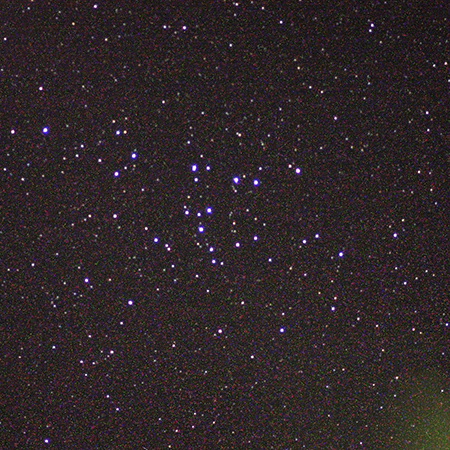
Image Credit: NASA/Donald R. Pettit
5. Mizar & Alcor
Looking for something a little easier? How about a double star that can be seen from suburban skies, almost all year round? If you already know how to find Polaris, then you’re already familiar with the Big Dipper (called “the Plough” in the United Kingdom.) It’s almost overhead during the spring and can be seen high over the northern horizon.
These seven stars form the brightest portion of the constellation of Ursa Major, the Great Bear. They circle Polaris, the Pole Star, throughout the year and depending on how far north you are may never sink below the horizon. If you look carefully at the middle star of the curved handle of the Dipper you may notice a tiny, faint star beside it.
The brighter of the pair is known as Mizar, while its faint companion is named Alcor. It’s a famous double and a popular one for beginners. The two are traveling together in the same direction through space, but are they a true double star system? The jury is still out, with scientific opinion changing over the years.
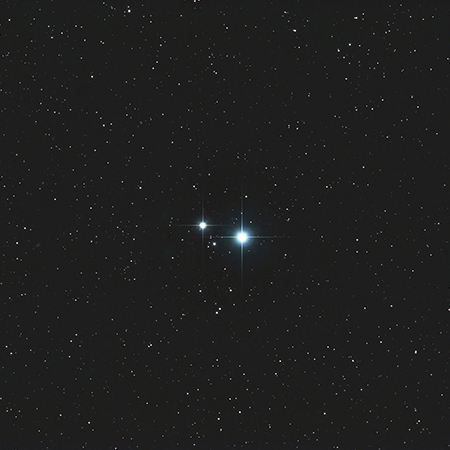
Image Credit: Greg Parker
6. Antares
As the seasons turn from spring to summer, we turn our attention to the stars of the southern hemisphere. Anyone living north of the equator will only have a fleeting view of the stars of Scorpius, the Scorpion, but one star in particular stands out.
Antares is a red supergiant star, some 550 light-years away. To the naked eye, it appears to have an orange-red hue and represents the heart of the scorpion. Its name means “rival of Mars” (Ant-Ares) because its color is said to be similar (although, at its best, Mars will be a lot brighter).
Antares is no small star. It’s thought to have a mass of at least 11 million Suns with a radius of about 700 times that of the Sun. If you were to place the star at the center of the solar system, it would probably stretch to about halfway between the orbits of Mars and Jupiter!
(Antares is the bright orange star on the bottom-right of this image)
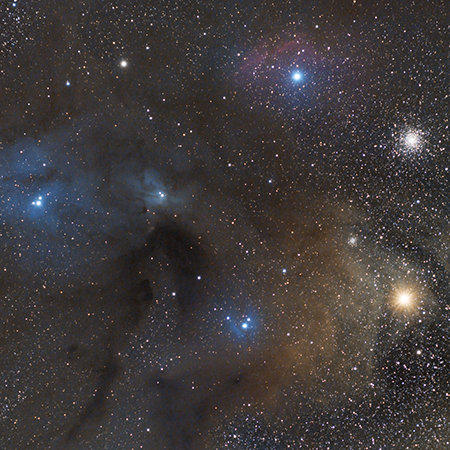
7. Deneb
Another fascinating star lies further north. Deneb, the brightest star in the constellation of Cygnus, the Swan, is the most northerly point in the Summer Triangle of stars. The other two points, Vega in the constellation of Lyra the Lyre, and Altair, in Aquila the Eagle, lie to the west and to the south, respectively.
Deneb itself marks the tail of the swan, and it’s during the warm summer nights that we’ll see the constellation flying overhead. What sets Deneb apart from its neighbors is its luminosity. The luminosity of a star is how brightly it shines: if you could place all the stars at an equal distance, which ones would appear most brilliant?
Deneb, it seems, is one of the most luminous stars known. Vega is the fifth brightest star in the sky, but that’s partly because it’s pretty close - just 25 light-years away. Altair is the twelfth brightest but, at 17 light-years away, it’s also a nearby neighbor.
Compare that to Deneb. It’s the 19th brightest star in the sky, so it’s fainter than both Vega and Altair, but it’s a whopping 2,600 light-years away. What does this mean? It means Deneb is super luminous. In fact, it shines with a light that’s nearly 200,000 times brighter than the Sun. (To put things into perspective, Vega has a luminosity of 40 Suns and Altair is about 11 Suns.)
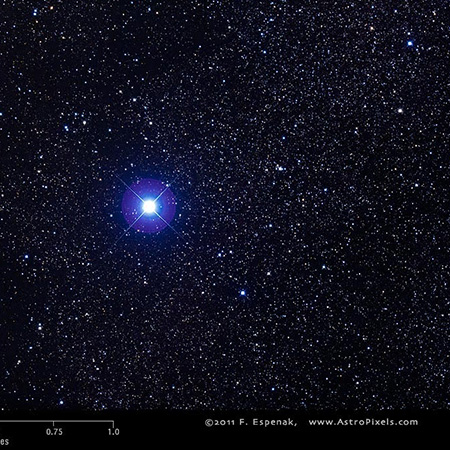
Image Credit: F. Espenak
8. Algol
How about a star that actually changes in brightness? Algol, an autumnal star in the constellation of Perseus, the Hero, is what’s known as an eclipsing binary variable star. To our eyes, it just appears as a single point of light, but there’s a second, darker star that orbits it. Once every 2 days, 20 hours and 49 mins, the secondary, darker star passes in front of the primary, brighter star (thereby eclipsing it) and dims its light.
From Earth, Algol then appears to fade a little. It stays that way for about ten hours, as the secondary star continues to pass in front of the primary star. When the eclipse is over, Algol returns to its usual brightness. You can find the dates and times of Algol’s eclipses on the website of The American Association of Variable Star Observers.

9. The Andromeda Galaxy
How far can you see with just your eyes? Obviously, it’s more than a million miles - the planets are further away than that - and it’s more than even several thousand light-years. Can you see as far as a million light-years? What about two million? Or even two and a half million?
There’s a tiny, faint smudge of light that the ancients knew well, and yet they had no idea of its true nature. Found within the autumn constellation of Andromeda, this misty grey, elongated patch looks like a tiny cloud that hangs, unmoving, in the night sky. It wasn’t until the last century that astronomers discovered what it was.
In 1925, the astronomer Edwin Hubble used the light from variable stars to determine its true distance - and he immediately realized he was looking at something far beyond our own galaxy. In fact, you’re looking at a whole other galaxy! This tiny, misty cloud is now known as the Andromeda Galaxy, and even though it’s our nearest galactic neighbor, it’s still a staggering two and a half million light-years away.
The Andromeda Galaxy is larger than our own and probably contains about twice as many stars. It’s the largest member of what’s known as the Local Group of galaxies, a cluster of more than 50 galaxies spread out over an area roughly ten million light-years across. In all, there are thought to be some two trillion galaxies in the entire universe. We inhabit but a tiny corner of the cosmos.
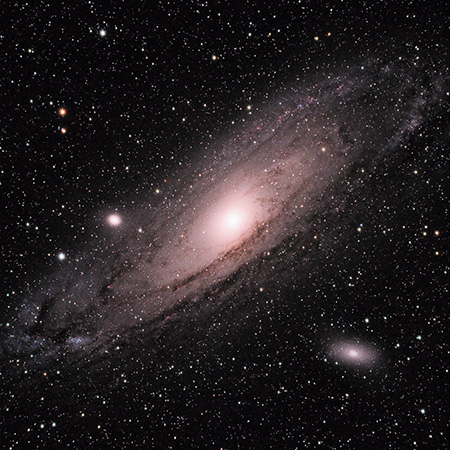
10. The Milky Way
If this makes your head swim a little, you can return to our own galaxy on almost any clear night of the year. Our galaxy is known as the Milky Way because, to the ancient Greeks, it appeared to be a diffuse, milky light that seemed to flow across the heavens. Although you can see it throughout the seasons, it’s best seen in summer when the constellation of Sagittarius, the Archer, is low over the southern horizon.
Look for the constellation’s teapot shape; if you look carefully, right above the spout is a bright, misty patch that almost seems to be steam escaping from the teapot. You’re now looking at the heart of our galaxy, some 28,000 light-years away. At its center is a black hole, some four million times more massive than the Sun.
All these wonders can be seen with just your eyes. Others might not believe you when you say you’re gazing at a star whose light can change over the course of several nights. They might laugh when you tell them you’re looking at a black hole or that you can see more than two million light-years away.
They might not see what you see, but that’s okay. Tell them anyway, and they might just open their eyes and their minds. If you’re lucky, they may even stand and stare with wonder beside you.
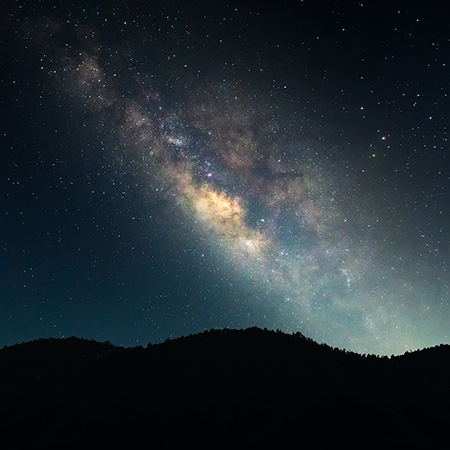

Learn More
Interested in learning more about what you can see in the night sky? Check out our Astronomy Hub to learn more!










